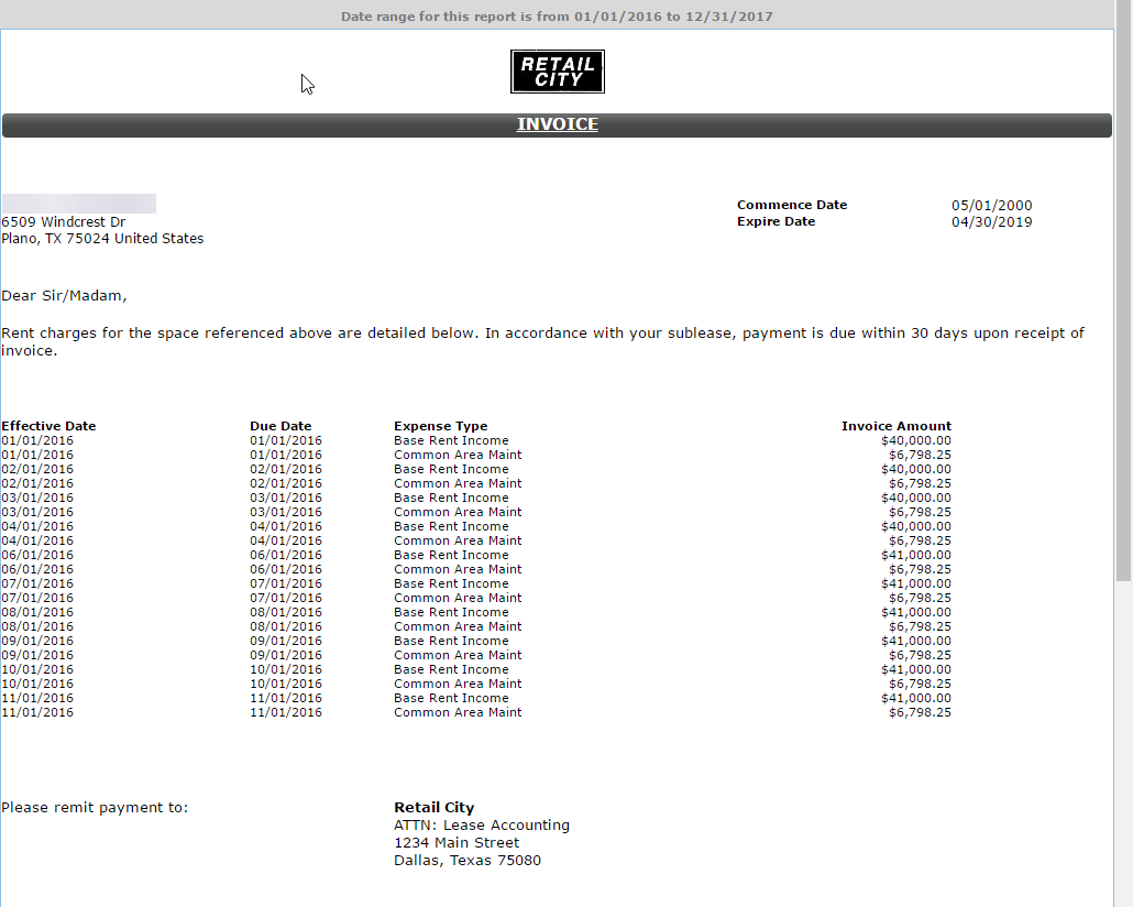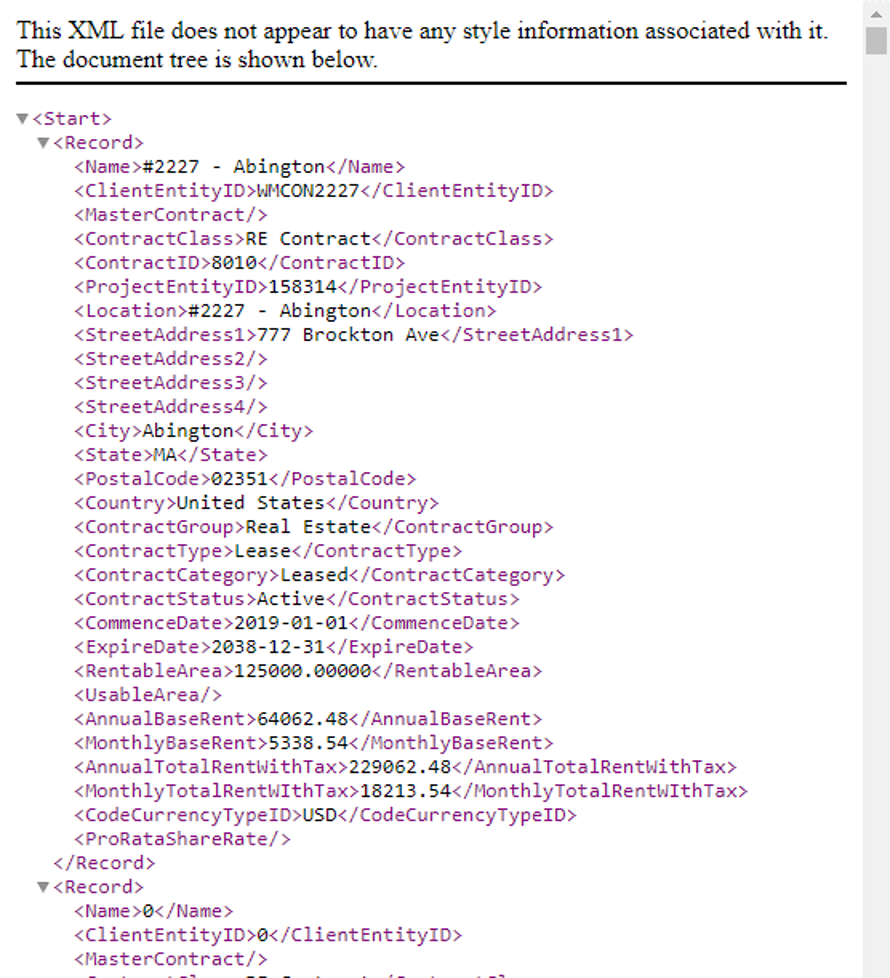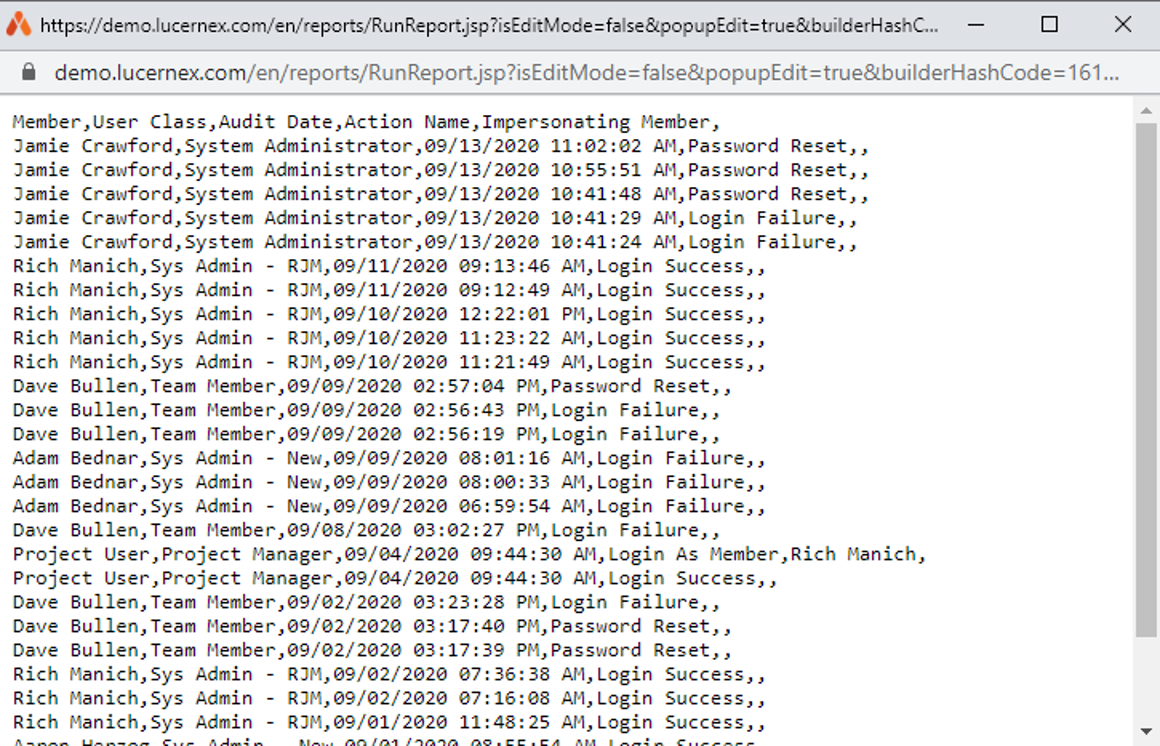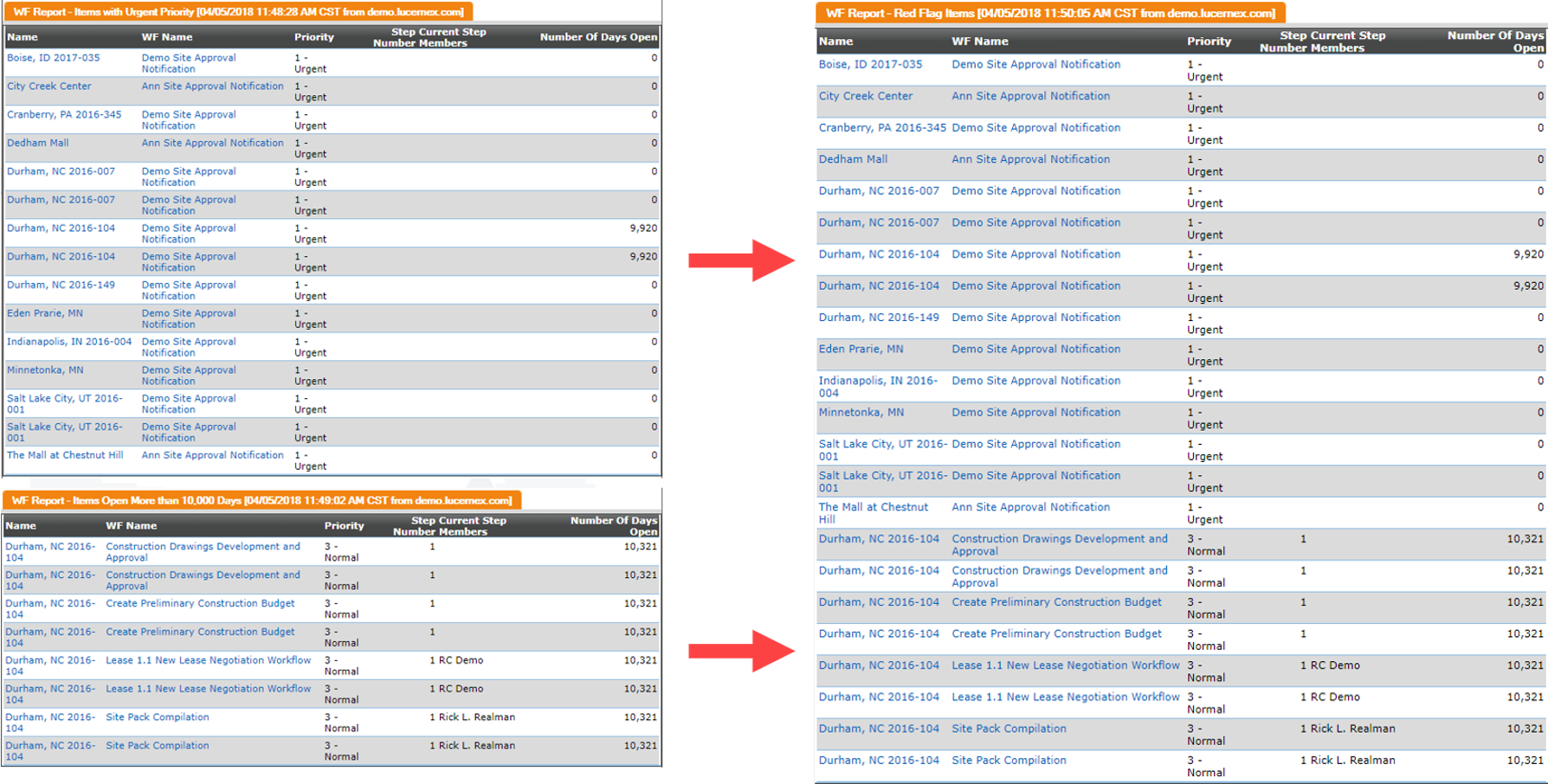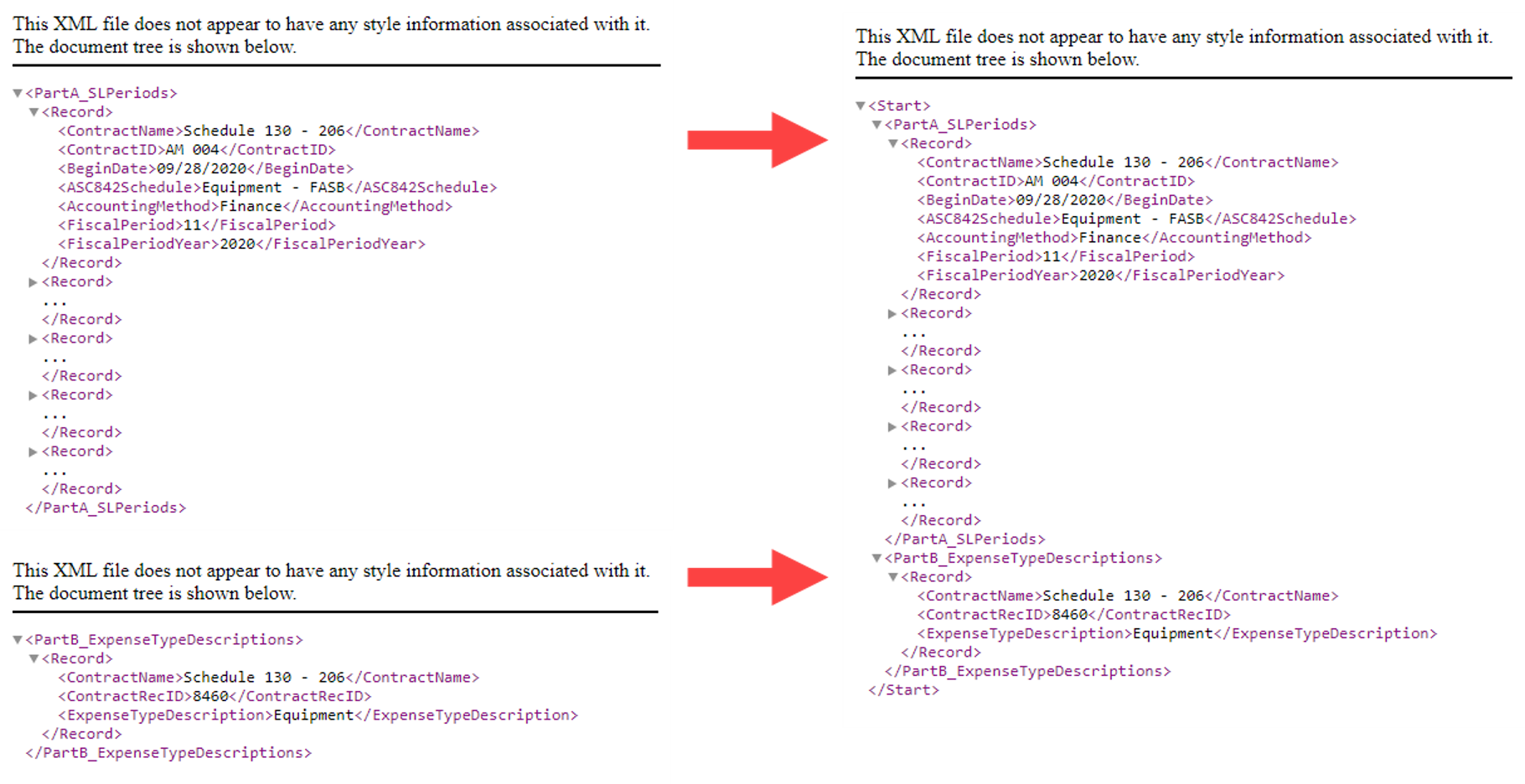Report View Types
You can configure your report's view type by selecting Display Settings from the Report Settings menu of the Report Builder. The view type you select will determine how your report is formatted and how the data in your report can be used.
The Spreadsheet view type is the default format selected when you create a report. It can be used to create versatile, detailed reports with in-system links. You can also create editable spreadsheet reports that update data in the system in real-time.
Example
The My Layout view type opens in your browser, and appears similar to a Summary page layout. You can create your My Layout report layout in the Preview pane.
Example
The Excel view type is used to create reports for in-depth review, analysis, and data manipulation. It is also used to create importable reports.
Example
The XML view type is used to format data for integrations, API calls, and Java filters to create integrations and advanced reports.
-
Format: XML
-
Frequency of Use: Rarely
-
Complexity: Complex
Example
The Flat File view type is used to send data to other systems for integrations.
Example
The Composite view type is used to report on multiple distinct record sets simultaneously.
Example
The Composite XML view type is used to format data from multiple distinct records sets for use in integrations, API calls, and Java filters to create integrations and advanced reports.
-
Format: XML
-
Frequency of Use: Rarely
-
Complexity: Complex
Example

